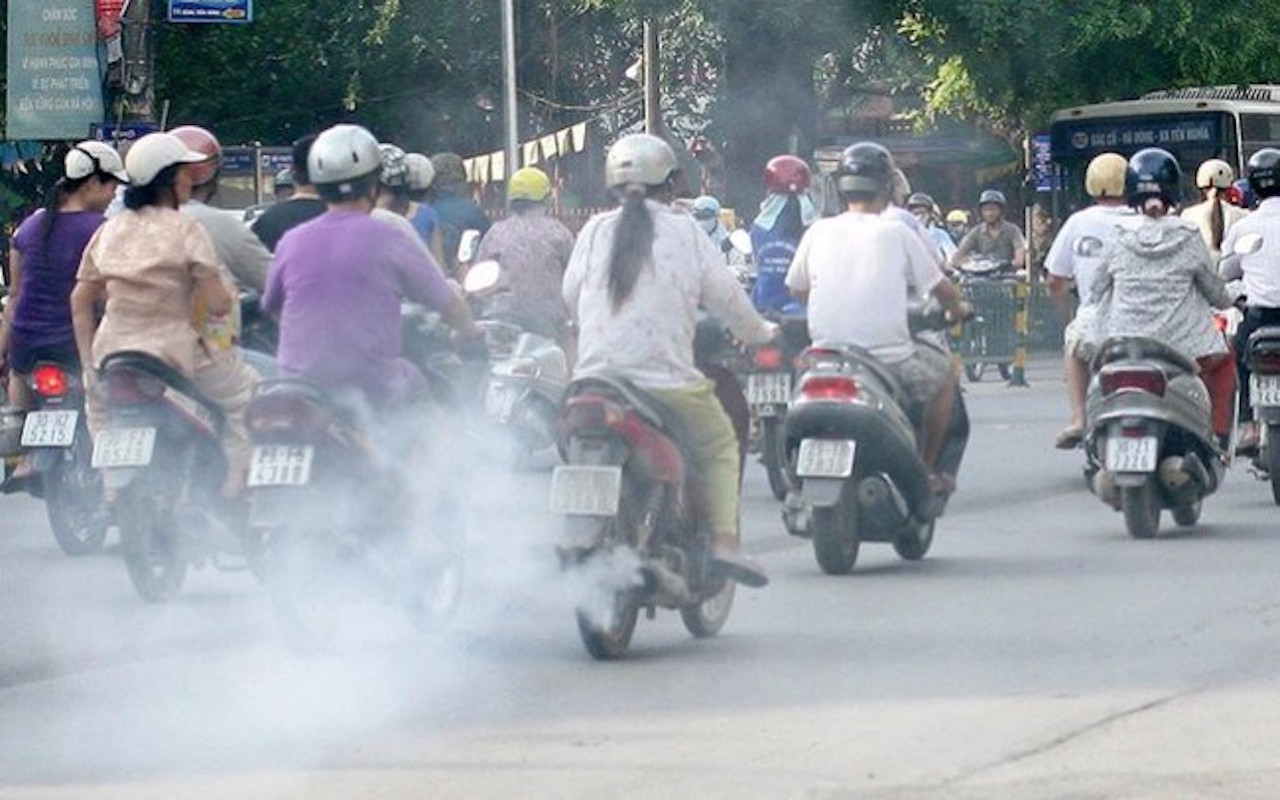To implement emissions testing for 5.6 million motorbikes in Hanoi and 8.6 million in Ho Chi Minh City, the two cities would require approximately 400 and 600 inspection facilities, respectively. Experts warn that without proper planning, the program could collapse before it begins.

According to the latest draft roadmap for motorbike emissions testing by the Ministry of Agriculture and Environment, the start date has been delayed by six months compared to the previous version.
Specifically, emissions testing in Hanoi and Ho Chi Minh City will begin on July 1, 2027 (instead of January 1, 2027). From July 1, 2028, the plan will expand to Hai Phong, Da Nang, Can Tho, and Hue. By July 1, 2030, all other provinces and cities will begin motorbike emissions inspections.
To allow time for public adaptation, the drafting agency added a provision that penalties will only be applied 18 months after the inspection phase begins. Until then, authorities will focus on public awareness and education. Motorbikes that fail emissions tests will be prohibited from operating.
Speaking with VietNamNet about the policy changes, a representative of the Vietnam Association of Motorcycle Manufacturers supported the cautious approach taken by regulatory agencies, considering that motorbikes remain the primary means of transportation for many. Emissions testing will directly impact the daily lives of countless households.
Potential system overload could render the plan unworkable
Tran Hoang Phong, a representative of the Vietnam Register under the Ministry of Construction, expressed concern that a simultaneous rollout of emissions testing could lead to a breakdown of the system.
Phong noted that inspecting motorbikes differs significantly from inspecting cars. Cars already benefit from a nationwide registration and inspection infrastructure, whereas a new system must be built from scratch for motorbikes.
Currently, Hanoi has 5.6 million registered motorbikes, and Ho Chi Minh City, after recent administrative mergers, has about 8.6 million. At an average of seven minutes per emissions test, Hanoi would require around 400 testing stations, while Ho Chi Minh City would need about 600.
The two cities currently have 70 car inspection centers. Even if these were repurposed for motorbike inspections, their infrastructure and personnel would need significant upgrades.
Private facilities present another challenge. While authorized dealerships may be willing to participate in inspections, nearly all independent garages are currently unprepared to offer such services.
“With the sheer volume of vehicles and the current state of readiness, launching emissions testing across the board at once carries a very high risk of bottlenecks,” Phong warned.
He recommended starting with older, high-emission vehicles manufactured before 2009. Hanoi and Ho Chi Minh City are estimated to have over 2 million and 3 million such vehicles, respectively. This approach would align with current capacities.
“If we can manage to inspect pre-2009 vehicles within the first year or two, it will give time for others to invest in building more facilities to handle the remaining fleet,” he added.
A representative of the Vietnam Association of Motorcycle Manufacturers agreed, emphasizing that while emissions testing itself is not complicated, the real challenge lies in preparation. The country must build enough stations and train sufficient personnel for the task.
“I believe the relevant agencies should urgently issue clear technical standards for motorbike inspection stations so that businesses and dealers know exactly what equipment to install and how to prepare their facilities,” the representative said.
Additionally, difficulties in certifying emissions inspectors need to be addressed. Under current regulations, inspectors must have a vocational degree and a certification from the Vietnam Register. However, many experienced repair workers at dealerships lack the required academic qualifications, even though emissions testing is a relatively simple procedure.
Inspection stations must also obtain business licenses and site permits from local construction departments. Without clear procedures and standards, businesses will struggle to meet these requirements.
“Given these challenges, I urge regulators to issue necessary guidelines and run pilot programs to gather experience before rolling out emissions testing nationwide,” the representative emphasized.
The Vietnam Association of Motorcycle Manufacturers also pledged to support a phased rollout and assist the public with maintenance, repair, parts replacement, and emissions testing services.
N. Huyen